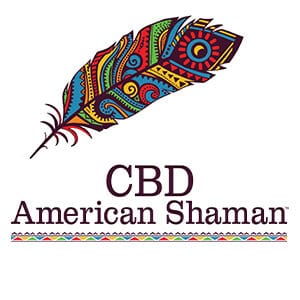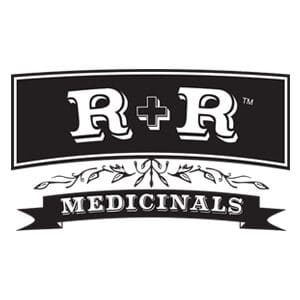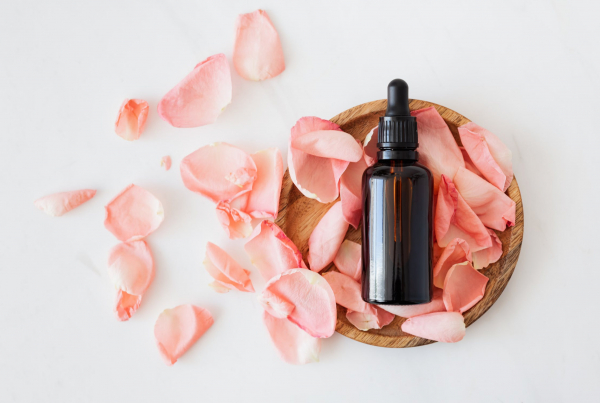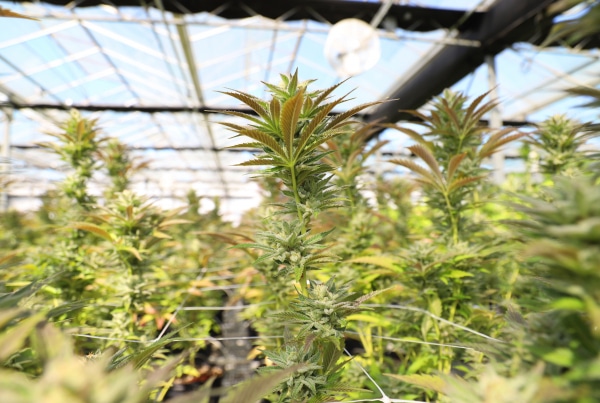Cannabidiol, or CBD, demonstrates significant anti-inflammatory benefits that have been successfully applied to therapies for a broad range of conditions. A growing body of evidence suggests that topical CBD products can be hugely beneficial to many of these conditions, whether applied alone or in combination with systemic CBD therapy. Many of these benefits create a compelling case for the applicability of CBD for dry skin, a common condition affecting millions of people.
While we tend to think of CBD as a predominantly therapeutic compound, and for good reason. More research is needed, but emerging studies support the application of CBD and other cannabinoids for the treatment of a diverse array of conditions and symptoms. Chronic pain, autoimmune conditions, dementia, cardiovascular disease, neuropathy, type II diabetes, psoriasis, arthritis, and many other conditions have been shown to respond positively to CBD, helping people lead healthier, happier, more comfortable lives without the expense and potentially harmful side effects of pharmaceutical drugs.
CBD (and other beneficial cannabinoids) possess clearly evident therapeutic use, but they may also be beneficial to people looking for relief from dry skin. This might seem a bit obvious (after all, CBD is usually taken dissolved in an oil, and oils are commonly used to treat dry skin), but there’s a bit more to the relationship between CBD and skin health than you might expect.
Here, we’ll examine the causes of chronically dry skin before breaking down the science of how CBD acts on different parts of the skin to modify crucial processes. Then, we’ll discuss the secondary ingredients (which are [very important] to the effectiveness of topical products especially) to look for to get the most relief from using CBD for dry skin. We’ll talk about how and why some ingredients work, what works best, and what to avoid to keep your skin looking and feeling its best.
Why Does Our Skin Dry Out?
To understand how to heal dry skin, we need to know a little bit about what’s causing it. Everyone’s skin gets a little dry now and again — you’ve likely experienced chapped winter skin or scaly knees at least a time or two. These isolated instances are often due to climate or a sudden change in environmental conditions, but chronically dry skin may be rooted in a different cause (or even a few of them).
Our skin can grow dry when we become dehydrated, from over-cleansing with harsh soaps and detergents, after taking a long, hot bath or shower, in relation to chronic illnesses, or due to an underlying skin condition like psoriasis or eczema. Sometimes, however, our skin just tends to be on the dry side.
The moisture levels in your skin are largely maintained by the sebum, or oil, produced by your sebaceous glands. When these glands are overactive, we often see oily skin, large pores, and persistent acne. When they under-produce oil, however, our skin dries out, feels tight, and begins to crack, developing a rough, scaly texture. If left untreated, dry skin can actually result in open wounds in the skin, so addressing dryness at the first sign is important, especially for people with sensitive skin (including children and the elderly).
Topical CBD for Dry Skin: the Science
CBD has a regulatory effect on many of the body’s processes, including sebum production. A 2014 study found that topically applied CBD had a positive regulatory effect on sebaceous glands. In patients whose skin was overly dry, researchers found that application of CBD helped to stimulate their sebaceous glands to produce more oil. This, in turn, led to higher cutaneous moisture levels (a measure of skin hydration) and improved skin health for study participants.
There is also evidence to support the idea that topical application of CBD affects the skin differently compared to oral or inhaled CBD, especially in treating skin conditions. This is because CBD engages with receptors in the skin in different ways than when it is absorbed through the lungs or digestive tract. While we still have much to understand about the specific actions by CBD on different receptors, emerging evidence indicates that CBD has a regulatory (or homeostatic) effect on skin in general, alleviating itching, soothing inflammation, protecting against environmental damage, reducing hyperpigmentation, and maintaining hydration.
Topical CBD Carrier Ingredients for Dry Skin
When using CBD to address dry skin specifically (or choosing topical products for therapeutic reasons when you have dry or sensitive skin), the supporting ingredients are of special importance. If you’ve struggled to find a go-to moisturizer on drugstore shelves, you probably understand why: many common ingredients in lotions, creams, serums, and other topical moisturizers contain ingredients that can actually dry out your skin even more. An otherwise outstanding CBD product won’t effectively address dry skin symptoms if it’s formulated with the wrong carrier ingredients.
Moisturizers tend to fall into one of four categories: humectants, emollients, ceramides, and occlusive moisturizers. Humectants include things like aloe vera, glycerin, and honey that attract moisture to the skin throughout the day, helping your body hold onto hydration in the environment more easily. Emollients serve to fill in the gaps between skin cells, improving texture and alleviating much of the sensation of dryness. Emollient ingredients include things like shea and cocoa butters, plant oils like olive, sweet almond, and avocado, and lanolin (a waxy molecule commonly derived from sheep’s wool).
Ceramides are a class of waxy lipid compounds found in skin cells that help the body to repair bonds between cells, improving skin condition and preventing moisture loss through damaged skin. Occlusive moisturizers, which include things like mineral oil, beeswax, argan oil, and jojoba oil, work by creating a barrier that helps skin retain more moisture throughout the day. Some compounds (including beeswax, argan oil, jojoba oil, olive oil, shea butter, cocoa butter, and safflower oil) work by two or more of these mechanisms, which may make them more effective.
If dry skin is your primary concern, there are a few carrier ingredients to steer clear of. Alcohols are major offenders common to lotion and cream formulas. Alcohol possesses strong astringent properties and is consequently used in many lotions to help break down bonds between skin cells to help the product penetrate better. This may be fine for oilier skin types, but it can be a real nightmare for dry skin.
We recommend avoiding stearyl, ethyl, and isopropyl alcohols because they tend to be the most drying. If you must reach for something formulated with an alcohol, try to opt for cetyl alcohol, a fatty compound derived from coconut that is far less damaging to skin. If cetyl alcohol triggers an allergic reaction for you, stearic acid (a large lipid molecule found in cocoa butter) might be a better alternative, though products formulated with it may feel more buttery than creamy.
Supporting Topical CBD Ingredients for Dry Skin
Almond Oil – Almond oil makes a good moisturizer for sensitive skin, as it’s non-comedogenic and demonstrates anti-inflammatory and anti-microbial properties. This makes it an especially good choice for people prone to acne, as it can help reduce redness and inflammation associated with cystic acne while reducing bacteria on the surface of the skin. Almond oil also possesses some occlusive moisturizing properties, protecting skin from excessive water loss throughout the day.
Aloe Vera – The clear, jelly-like substance contained within the leaves of the aloe plant (also commonly called aloe barbadensis) possesses powerful hydrating properties for the body and skin. Many cultures have used it traditionally to heal burns and scrapes, but it may also be applied as a moisturizer. Aloe possesses antimicrobial and antioxidant properties that can help speed healing and protect skin from environmental damage due to sun exposure. The plant extract may also help diminish signs of aging, improving skin texture and tone by increasing the moisture content of skin cells at the surface.
Argan Oil – Made from the nuts of the argan tree (native to Morocco), argan oil has become something of a cosmetic darling in recent years. It possesses impressive antioxidant effects (potentially helpful for people who spend a substantial amount of time in the sun) as well as high levels of vitamin E, which is shown to promote healing and hydrate skin. It also acts as an anti-inflammatory, making it a good option for many with skin conditions like eczema or psoriasis. However, it may cause breakouts in some people, especially those with tree nut allergies, so approach with caution if your skin is especially sensitive.
Beeswax – While it isn’t strictly vegan, there are some compelling arguments to be made for the use of sustainably harvested beeswax in skin products. Beeswax has been used throughout human history to soothe and heal dry skin, protecting it from damage while helping it retain moisture. It truly is a powerhouse of skincare, forming a strong barrier on the skin’s surface while nourishing and helping to restore bonds between skin cells. It acts as a humectant, drawing moisture into the skin from the environment, and confers powerful antimicrobial and anti-inflammatory benefits. It is also well-tolerated among users with sensitive skin and does not clog pores, even when used in acne-prone areas of the face and body. That said, it can cause an allergic reaction in a small proportion of users, especially those who are allergic to poplar trees, from which most beeswax is derived.
Carnauba Wax – Derived from the leaves of a palm tree native to Brazil, carnauba wax behaves very similarly to beeswax and is often used as a vegan alternative. It does offer many of the same skin-protecting and occlusive benefits as beeswax, and carnauba helps topical products stay solid and glide on smoothly as well. However, there’s a bit of a catch: carnauba wax tends to be more associated with breakouts compared to beeswax, and some people are allergic to it. It’s also important to use sustainably harvested carnauba wax, as the trees die if too many leaves are harvested at once.
Cocoa Butter – A product of cacao processing, cocoa butter is a thick, rich, highly emollient plant butter that is popular among people with dry skin — and for good reason. While it may be too heavy for more delicate skin (and especially the face), cocoa butter yields a rich texture and lasting protection from the elements. Its characteristic richness comes from its high fatty acid content, which provides both emollient and occlusive hydration. Like the cacao it comes from, cocoa butter also contains lots of antioxidants and yields anti-inflammatory benefits.
Coconut Oil – Coconut oil has emerged as something of a darling in the health world, touted as a cure-all for a myriad of ails. While it isn’t exactly a miracle oil, coconut oil (and its sister in the beauty world, Monoi, which is coconut oil infused with the Tiare flower of Hawaii) does confer some powerful moisturizing benefits. Coconut oil is composed largely of medium-chain triglycerides (MCTs), which act as both emollient and occlusive moisturizers to improve skin hydration. Coconut oil also shows to have anti-inflammatory properties when applied to the skin and may be beneficial in wound healing. It is a heavy oil, however, and may cause some people to break out, especially with continuous use. Coconut is also a potential allergen for some folks, so be sure to check the label — especially on products like salves and balms, which often heavily feature coconut oil.
Cucumber – One of the few botanicals on our list, cucumber packs a surprising punch of moisture without oils or buttery compounds. The hydrating and anti-inflammatory properties of cucumber come from its balance of antioxidants, flavonoids, vitamin C, and lots of good old-fashioned water. Cucumber may help to protect skin from environmental and sun damage, promote healing, reduce redness and puffiness, and alleviate itching while improving the skin’s ability to retain moisture. While it may not be heavy enough to do the job on its own, cucumber extract can work very well alongside more emollient moisturizers to hydrate without smothering the skin. It’s generally well-tolerated, though those with cucumber allergies should avoid it.
Grapeseed Oil – Grapeseed oil is, in our opinion, rather an underrated carrier oil. Unlike many of the other oils listed here, grapeseed oil (derived from the leftover seeds from wine grapes) absorbs nearly instantly into the skin, leaving behind no greasy residue. It’s also non-comedogenic and well-tolerated among sensitive skin types. Grapeseed oil has been shown to possess anti-inflammatory and antioxidant properties as well, and may help to promote healing while protecting skin from damage. Of course, take care to avoid grapeseed oil if you are allergic to grapes.
Jojoba Oil – While jojoba oil (derived from the nut of the North American desert-dwelling jojoba plant) has historically been used by many indigenous cultures, it’s a relative newcomer to mainstream Western beauty and hygiene products. The oil possesses antioxidant and anti-inflammatory properties thanks to its high vitamin E content, and it acts as a humectant, drawing in moisture all day long. It’s also non-comedogenic (it’s quite similar in composition to the body’s natural oils) and suitable for sensitive skin. It is generally considered to be hypoallergenic, though there are a few rare exceptions.
Mango Butter – Pressed from the pits of the tropical fruit, mango butter is similarly rich in texture to shea and cocoa butters. However, its composition is subtly different, conferring many of the same benefits without causing breakouts. Mango butter is non-comedogenic, anti-inflammatory, antioxidant, and hydrating to the skin. It can also yield a cooling effect, helping to soothe the itching and discomfort often associated with severe dry skin. While mango butter may be beneficial to many different people, it should be avoided by anyone with a mango allergy.
Neem – Also known colloquially as Indian lilac, neem trees yield a potent oil rich in bioactive compounds that may help soothe skin. However, because it’s quite strong, it may cause inflammation in some people. Like any essential oil, neem should only be applied diluted (and should be avoided if it produces an adverse reaction). That said, it demonstrates powerful antibacterial, antifungal, and antioxidant propertiesthat may help protect skin from environmental and microbial damage. Preliminary research has shown it to be effective at reducing the severity of psoriasis symptoms when used consistently in diluted form, and it may be effective against some types of acne as well.
Papaya – A tropical fruit popular in Southeast Asia, papaya contains high levels of vitamin C and lycopene. These compounds give the fruit extract antioxidant and anti-inflammatory properties. Papaya may help to reduce inflammation, itching, and dullness associated with chronically dry skin. However, it may be best reserved for the occasional application, as it can contribute to dryness in a small proportion of people.
Pumpkin Seed Oil – Pressed from the seeds of the favorite autumnal gourd, pumpkin seed oil contains antioxidants, fatty acids, and phytonutrients that may help promote healing while hydrating and protecting the skin. These include linoleic acid, an occlusive moisturizer, alongside the antioxidant compounds called sterols and tocopherols. Pumpkin seed oil is non-comedogenic and may help to reduce redness, itching, and swelling. It’s also generally well-tolerated, though those with a pumpkin or squash allergy should opt for other ingredients instead.
Shea Butter – Shea butter has been historically used by African cultures to hydrate, soothe, and protect skin and hair. A richly emollient substance derived from the nut of the African karite tree, shea butter is high in antioxidant polyphenols and essential fatty acids. It acts as an occlusive and emollient moisturizer that can help shield skin from environmental damage while encouraging healing and improving skin texture and elasticity. It is a rich, intensive plant butter that is generally well-tolerated, but may be associated with breakouts in some users.
Tamarind – Tamarind, a piquant fruit popular in cuisine around the world, may possess antioxidant properties that can help promote healing and prevent skin damage when applied as a prophylactic. While the precise mechanisms aren’t yet completely clear, preliminary studies demonstrate tamarind seed extract to be beneficial to the skin, helping prevent the damage caused by the sun’s UVA rays. Tamarind extract may also help to promote healing in severe dry skin, though it could cause an allergic reaction in some people, particularly those who suffer from peanut allergies.
A Note About Sustainability
In a consumer environment where relatively little attention is paid to the sourcing and sustainability of ingredients, making conscious buying decisions can be a challenge. While we want to use our platform to help people choose products that are better for both them and the planet at large, we also recognize that “better” often doesn’t mean “perfect.”
We want to empower our readers to make their own decisions, and part of that conversation involves an understanding that individual values differ from person to person. In the spirit of education, we’d like to offer some general advice for choosing better (though not necessarily perfect) products where possible. None of us can single-handedly change the world with our purchasing decisions, but that doesn’t mean that there isn’t value in choosing to support sustainably sourced products where we can.
We prefer to use plant-derived ingredients over animal products wherever possible, and certainly over petroleum products. This is largely to do with sustainability, as petroleum is a nonrenewable resource and animal products require a great deal of resources to produce. In general, plant-derived products have a lower impact on the environment (especially when farmed organically) and tend to be well-tolerated by most skin types. They’re also vegan, with a few weird (but cool!) exceptions like figs.
That said, there are a couple of animal-derived ingredients like collagen, honey, beeswax and lanolin that are able to be harvested sustainably. While these ingredients are not considered vegan, some people may find that they play an important role in managing their symptoms. If this is true for you, make the decisions you feel are most appropriate for your situation.
Lastly, about that word “vegan” — it may not mean what you think it means. You might have seen the term vegan applied to cosmetics, clothing, shoes, and other non-food items. In labeling,“vegan” indicates that no animal products were used to make the product, but that doesn’t mean that it’s necessarily better for the earth. Vegan materials include things like pleather, acrylic, polyester, and rayon, which are made of petroleum-based plastics — not exactly natural or great for the planet. We advise you to closely examine products labeled as “vegan;” they may not be as environmentally conscious as they appear.
Takeaway
Topical CBD can be highly beneficial for soothing and healing dry skin, but its effects can be reduced by the wrong supporting ingredients. When searching for a topical CBD product to alleviate dry skin, look for plant-derived ingredients with emollient and hydrating properties over synthetic or petroleum-based ingredients. Be mindful of any special concerns you may have, such as sensitivities or allergies, when examining product labels to find the best CBD topicals for your skin.












